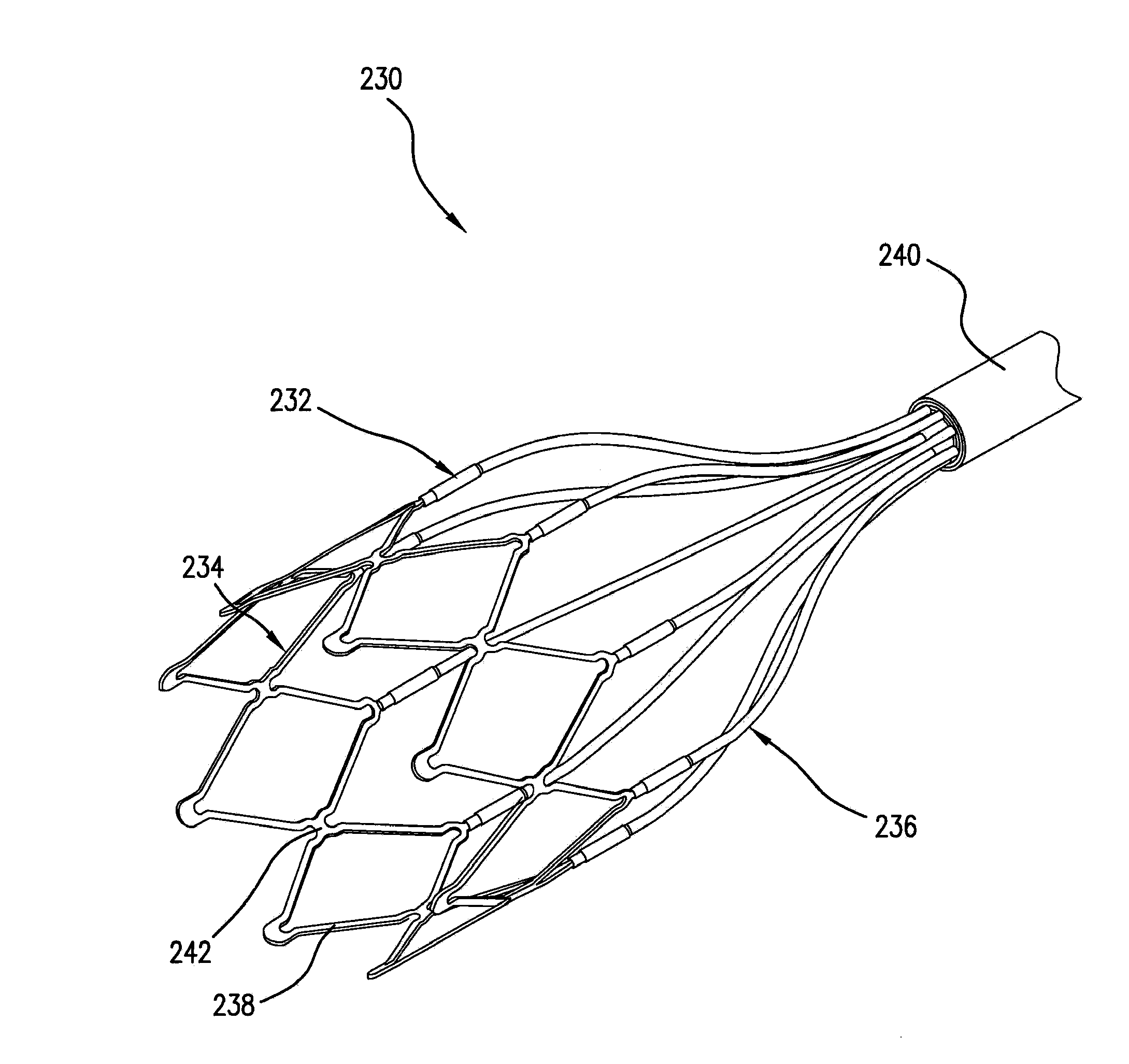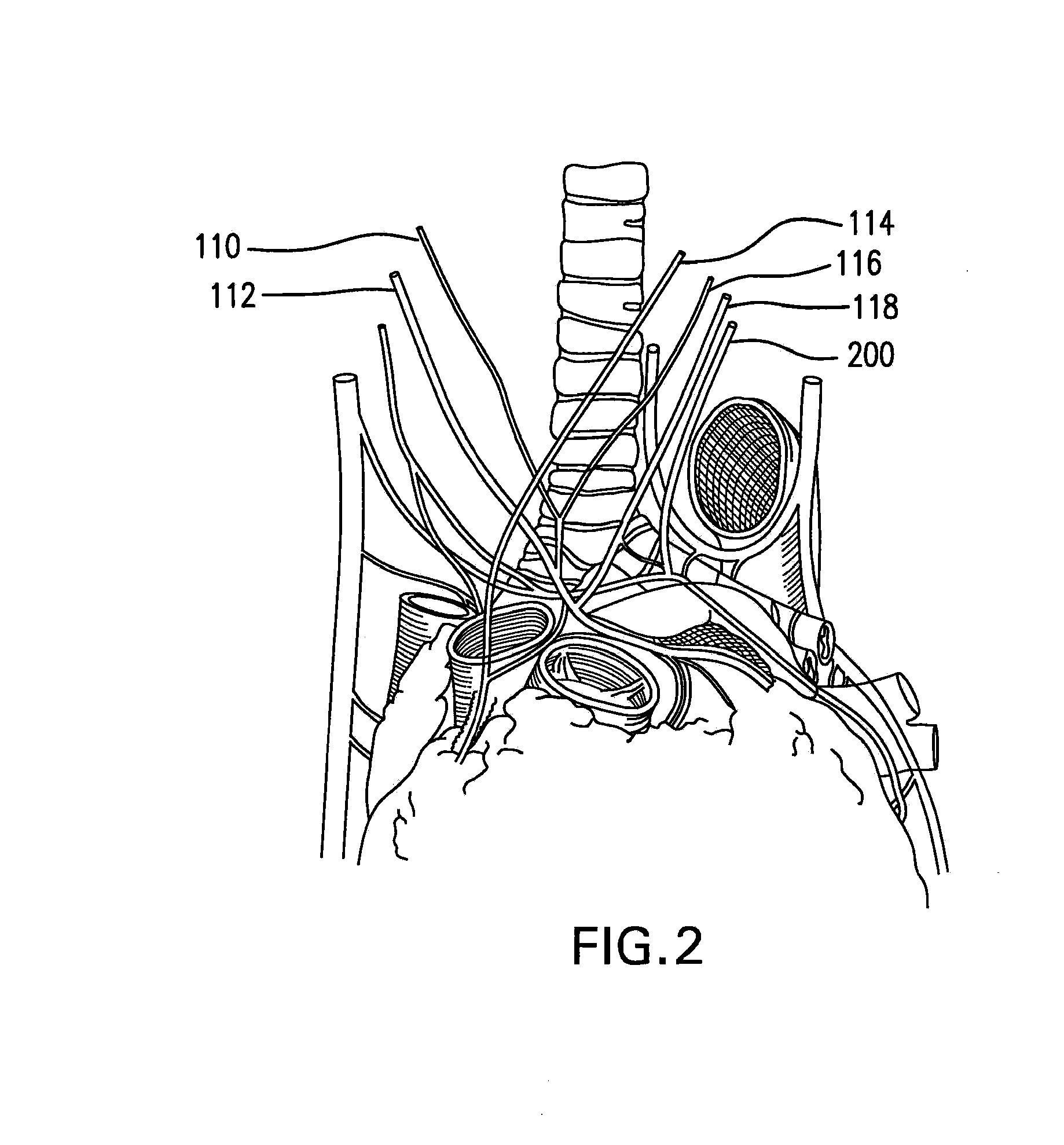Methods and systems for treating acute heart failure by neuromodulation
a neuromodulation and heart failure technology, applied in the field of methods and systems for treating acute heart failure, can solve the problems of increased heart contractility, increased myocardium consumption, and excess mortality caused by cardiac arrhythmias
- Summary
- Abstract
- Description
- Claims
- Application Information
AI Technical Summary
Benefits of technology
Problems solved by technology
Method used
Image
Examples
example 1
[0034]Six open-chest dogs were instrumented with a left ventricle conductance catheter and an aortic flow probe. Modified electrode-catheters were placed inside the pulmonary artery under echocardiographic and fluoroscopic guidance in five dogs. In the last dog, a stent-based electrode, as illustrated in FIG. 3, was used. Stimulation was applied at 20 Hz, 0.4 ms, and 15-25 mA. The corresponding hemodynamic effects are reported as averages of 30 second periods of continuous recording.
[0035]Pressure variation in the left ventricle over time increased in all dogs. The average increment was 25.7% (+ / −11.8) and the average of maximum increase variation was 28.3 (+ / −8.9). Emax was measured in the last animal, showing a 45% increase. The average reduction of RR interval during stimulation was 3.3% (+ / −10.4).
[0036]Therefore, electrical modulation via a pulmonary artery catheter can produce positive inotropic effects with minimal changes in heart rate.
example 2
[0037]Eight open-chest dogs are instrumented with a left ventricle conductance catheter and an aortic flow probe. Modified electrode-catheters are placed inside the pulmonary artery under echocardiographic and fluoroscopic guidance in five dogs. In three dogs, a stent-based electrode, as illustrated in FIG. 3, is used. Stimulation is applied at 20 Hz, 0.4 ms, and 15-25 mA. The corresponding hemodynamic effects are reported as averages of 30 second periods of continuous recording.
[0038]FIG. 6 shows the percentage changes in dP / dt max for each dog when compared to the baseline. Specifically, FIG. 6 shows the peak dP / dt max % change achieved during modulation and the average % change in dP / dt max in a period of 30 seconds. There is significant increase in dP / dt max during modulation ranging from 21-22 to 44-45%. However, there is no significant change between the average and the peak value.
[0039]FIG. 7 compares the average dP / dt max to the percentage increase in heart rate in the eight...
PUM
 Login to View More
Login to View More Abstract
Description
Claims
Application Information
 Login to View More
Login to View More - R&D
- Intellectual Property
- Life Sciences
- Materials
- Tech Scout
- Unparalleled Data Quality
- Higher Quality Content
- 60% Fewer Hallucinations
Browse by: Latest US Patents, China's latest patents, Technical Efficacy Thesaurus, Application Domain, Technology Topic, Popular Technical Reports.
© 2025 PatSnap. All rights reserved.Legal|Privacy policy|Modern Slavery Act Transparency Statement|Sitemap|About US| Contact US: help@patsnap.com



